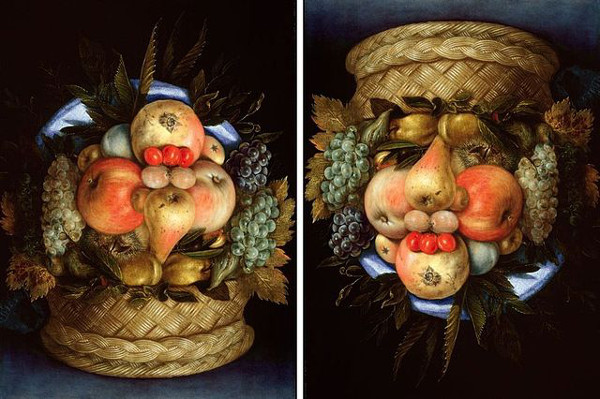
Invertible Head as Basket of Fruit, c. 1590, by the Italian painter Giuseppe Arcimboldo.
He also personified the elements and the seasons.

Invertible Head as Basket of Fruit, c. 1590, by the Italian painter Giuseppe Arcimboldo.
He also personified the elements and the seasons.
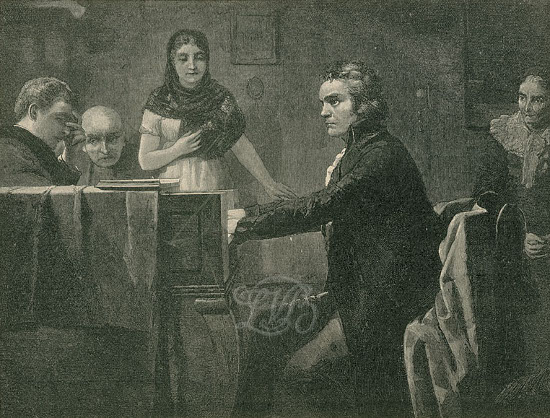
In 1933, violinist Jelly d’Aranyi declared that the spirit of Robert Schumann was urging her to find a concerto that he’d written shortly before his death in 1856. In this episode of the Futility Closet podcast we’ll describe the discovery of Schumann’s lost violin concerto, as well as a similar case in which a London widow claimed to receive new compositions from 12 dead composers.
We’ll also puzzle over how a man earns $250,000 for going on two cruises.
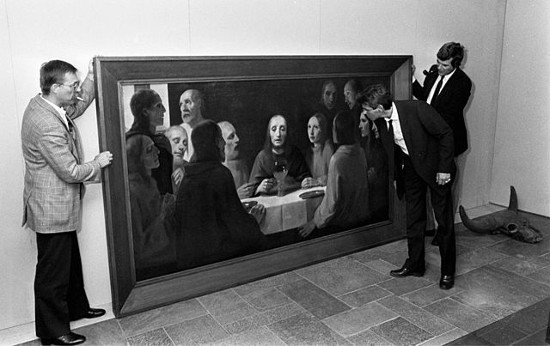
What’s the difference between forgery and plagiarism?
“This has been answered clearly by Monroe C. Beardsley: In the case of plagiarism one concerns oneself in ‘passing off another’s work as one’s own’; in the case of forgery, in ‘passing off one’s own work as another’s.'”
— Sándor Radnóti, The Fake: Forgery and Its Place in Art, 1999
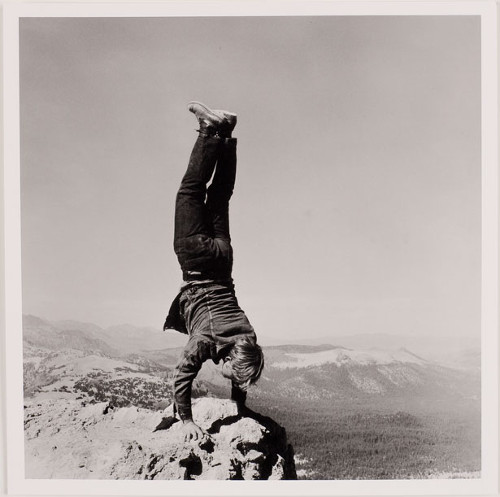
In 1969 artist Robert Kinmont produced 8 Natural Handstands, a series of photographs of himself standing on his hands in various locations.
Each, he said, depicted an upside-down view of Atlas holding up the earth.
“This world,” wrote Thoreau, “is but canvas to our imaginations.”
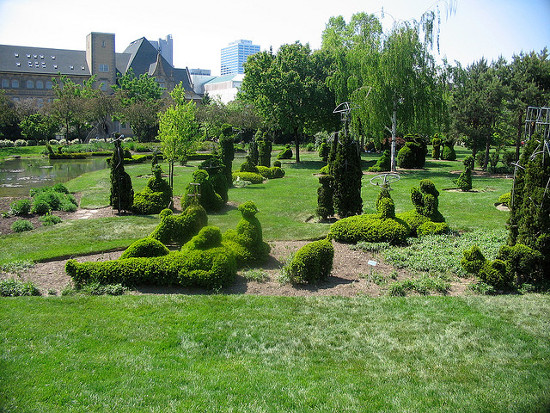
James Mason’s topiary park in downtown Columbus, Ohio, was inspired by Georges Seurat’s A Sunday Afternoon on the Island of La Grande Jatte, below.
So the image above is a photograph of a sculpture of a painting of a landscape.
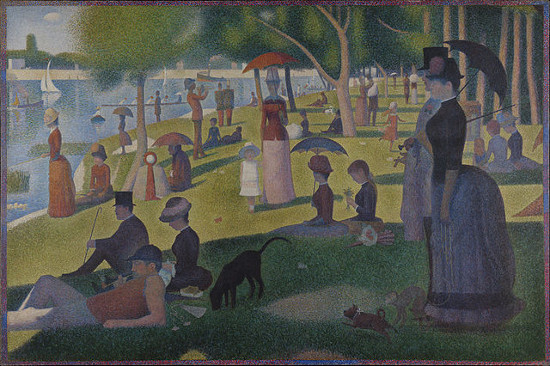
Artist Thomas Cole took up a grand theme in 1833 — The Course of Empire, a series of five paintings that depict the rise and fall of a civilization. The Savage State shows a prehistoric wilderness in which the only artificial note is a circle of teepees:
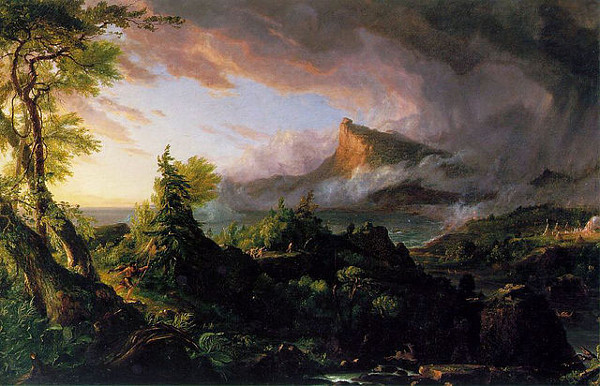
The Arcadian or Pastoral State shows the beginning of agriculture, with a primitive temple, farmers, and shepherds:
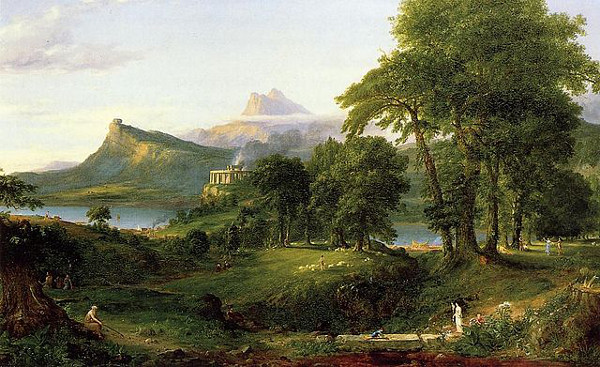
The Consummation of Empire shows a thriving city, with an imperial procession crossing a triumphal bridge:
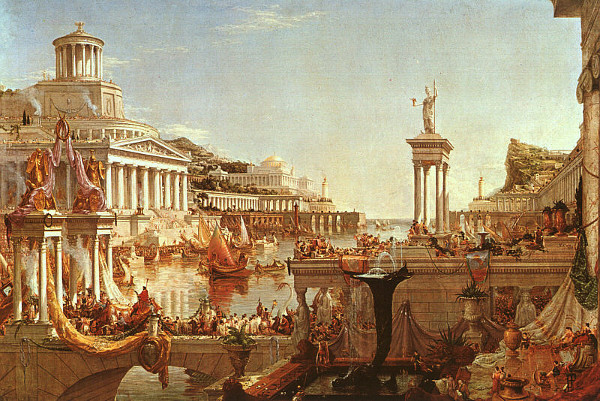
Destruction shows barbarians sacking the city and nature herself punishing human presumption:
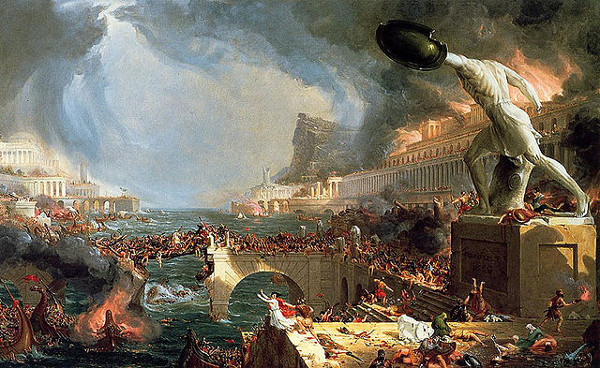
And Desolation shows the return of nature, with trees growing up through the ruins of the city:
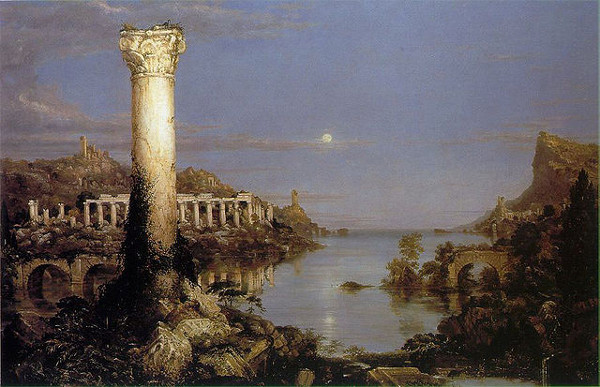
Interestingly, all five paintings depict the same scene: In the foreground is a natural port, and in the background is a distinctive mountain precipice. The time of day passes from dawn to dusk.
In 1836 more than 2,000 people attended the paintings’ exhibition at the National Academy of Design, an audience unprecedented in the United States. “The philosophy of my subject is drawn from the history of the past, wherein we see how nations have risen from the savage state to that of power and glory, and then fallen, and become extinct,” Cole had written to his patron Luman Reed. “You will perceive what an arduous task I have set myself; but your approbation will stimulate me to conquer difficulties.”
(Thanks, Cody.)

Artist Pierre Vivant performed a sort of typographical sleight of hand in an Oxfordshire field in 1990. In early summer oilseed rape changes from green to yellow as its flowers open. Vivant cut the words GREEN and YELLOW into the flowering field so that each word bore the color it named. Over the ensuing month, the flowers faded and the field reverted to green while the plants in the areas that Vivant had cut grew and flowered. The end result was the reverse of what you see here: a green field in which the word GREEN is yellow and the word YELLOW is green.
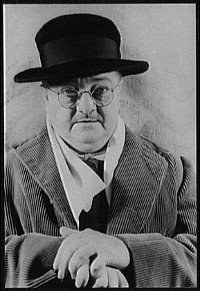
Alexander Woollcott set a world record for the shortest review of a Broadway play.
The play was titled Wham!
Woollcott’s review, in full, read “Ouch!”
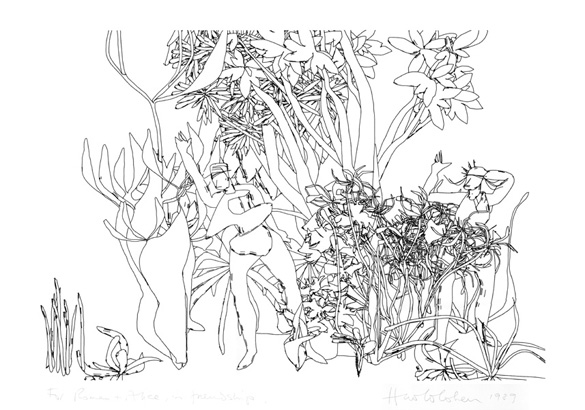
Shortly after joining the faculty of UC San Diego in 1968, British artist Harold Cohen asked, “What are the minimum conditions under which a set of marks functions as an image?” He set out to answer this by writing a computer program that would create original artistic images.
The result, which he dubbed AARON, has been drawing new images since 1973, first still lifes, then people, then full interior scenes with color. These have been exhibited in galleries throughout the world.
Carnegie Mellon philosopher David E. Carrier writes, “A majority of the viewers of AARON’s work find recognizable shapes in it; the drawing above appears to contain human figures. But AARON here used only the twenty or thirty rules it usually uses, with no special reference to human beings. Does knowing this tell us something about the structure of representation?”
Cohen asks, “If what AARON is making is not art, what is it exactly, and in what ways, other than its origin, does it differ from the ‘real thing?’ If it is not thinking, what exactly is it doing?”
“At the risk of stating the obvious, it seems to me that one of the things human beings find interesting about drawings in general is that they are made by other human beings, and here you are watching the image develop as if it is being developed by another human being. … When the drawing is finished, it functions as a human drawing. … A large part of what we value in art is not the ability of the artist to communicate special meanings, but rather the ability of the artist to present the viewer with something that stimulates the viewer’s own propensity to generate meaning.”
John Cage indicated that his 1987 piece Organ2/ASLSP should be played “as slow as possible,” but he declined to say how slow that is. Because a pipe organ can be rebuilt piecemeal as it plays, in principle there’s no limit to how long a performance can last.
In 1997 a conference of musicians and philosophers decided to take Cage’s instruction seriously and arranged a performance that would last 639 years. Fed by a bellows, a custom-built organ in the St. Burchardi church in Halberstadt, Germany, has been playing the piece since Sept. 5, 2001; it began with a contemplative 17-month pause, then played the first chord (A4-C5-F#5) for two years. Since then it’s got through only 12 changes; the next won’t occur until Sept. 5, 2020.
This will go on for another 620 years, ending on September 5, 2640. By that time someone somewhere will probably be playing it even more slowly.